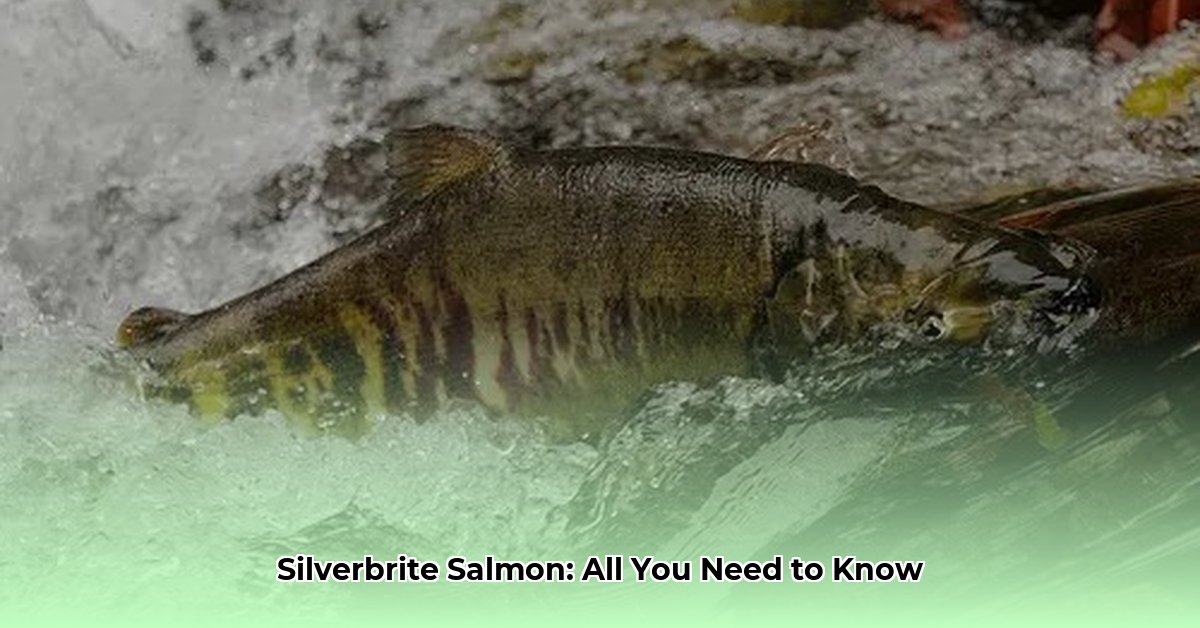Ever heard of Silverbrite salmon? It’s the hidden gem of the Pacific, offering a unique flavor profile and a wealth of nutritional benefits. This comprehensive guide dives deep into the world of Silverbrite (also known as chum, keta, or dog salmon), exploring its taste, texture, nutritional value, sustainable sourcing, and versatile cooking methods. Get ready to discover your new favorite fish!
Discovering Silverbrite: An Introduction
Silverbrite salmon, scientifically known as Oncorhynchus keta, stands out with its milder flavor compared to its more intense cousins like Sockeye. This makes it an excellent entry point for those new to salmon or those who prefer a less “fishy” taste. Its firm, flaky texture holds up well to various cooking methods, from grilling and baking to smoking and pan-searing. But Silverbrite’s uniqueness extends beyond its culinary qualities. During its spawning journey from the ocean to freshwater rivers, it undergoes a dramatic transformation, developing vibrant purple blotches and reddish-black stripes. The males even grow prominent teeth, earning them the nickname “dog salmon.” This fascinating life cycle underscores the vital role Silverbrite plays in the Pacific Northwest ecosystem.
Taste, Texture, and Nutritional Profile
Silverbrite offers a delicate, slightly sweet flavor, a refreshing contrast to the rich, bold taste of Sockeye. Its texture is firm yet delicate, flaking beautifully when cooked properly. While lower in fat than some other salmon varieties, Silverbrite remains a nutritional powerhouse. It’s an excellent source of:
- Protein: Essential for building and repairing tissues.
- Omega-3 Fatty Acids: May contribute to heart and brain health. Ongoing research continues to explore the numerous potential benefits of omega-3s.
- Selenium: An antioxidant that supports various bodily functions.
- Niacin (Vitamin B3): Plays a role in energy metabolism and nervous system function.
- Vitamin B12: Crucial for red blood cell formation and nerve function.
Here’s a quick comparison with Sockeye:
| Feature | Silverbrite | Sockeye |
|---|---|---|
| Flavor | Mild, Delicate, Slightly Sweet | Rich, Bold, Distinctly Savory |
| Texture | Lighter, Firmer | Buttery, Flaky, Rich |
| Fat Content | Lower | Higher |
| Color | Pale Pink to Light Orange | Deep Red |
Culinary Adventures with Silverbrite
Silverbrite’s mild flavor makes it a blank canvas for culinary creativity. It readily absorbs marinades and pairs well with bold spices and herbs. Here are a few delicious ways to prepare it:
Smoked Silverbrite Salmon
- Marinade: Whisk together apple cider, brown sugar, salt, and nutmeg.
- Marinate: Submerge Silverbrite fillets in the marinade for 12-24 hours in the refrigerator.
- Smoke: Preheat your smoker to 200°F. Use alder or applewood chips. Smoke the fillets skin-side down for 2-4 hours, or until they reach an internal temperature of 145°F.
Grilled Silverbrite with Lemon and Dill
- Prepare: Drizzle fillets with olive oil, dill, and lemon juice.
- Grill: Grill over medium-high heat for 4-5 minutes per side.
Baked Garlic Butter Silverbrite
- Prepare: Melt butter with minced garlic.
- Bake: Arrange fillets in a baking dish, pour garlic butter over them, and bake at 375°F for 12-15 minutes.
Pan-Seared Silverbrite with Honey Glaze
- Glaze: Whisk together honey, soy sauce, and Dijon mustard.
- Sear: Sear fillets in a hot pan for 3-4 minutes per side. Brush with glaze during the last minute.
Silverbrite Salmon Tacos with Avocado Salsa
- Prepare: Cook salmon and make avocado salsa (avocado, tomato, red onion, cilantro, lime juice).
- Assemble: Flake salmon into warm tortillas and top with salsa and your favorite taco fixings.
Sustainability and Sourcing
Choosing sustainable seafood is vital for the health of our oceans. Silverbrite salmon populations are generally considered healthy, but sourcing matters. Look for the Marine Stewardship Council (MSC) blue label, which indicates that the salmon comes from a fishery committed to responsible practices. These practices include managing catch limits, minimizing bycatch, and considering the impact of climate change on salmon populations. Ask your local fishmonger about sustainably sourced Silverbrite or check online retailers specializing in sustainable seafood.
Conclusion
Silverbrite salmon offers a delicious, nutritious, and often sustainable seafood option. Its mild flavor and versatile nature make it a fantastic choice for both seasoned chefs and home cooks alike. By understanding its unique qualities and making informed choices about sourcing, you can enjoy this hidden gem while contributing to a healthier planet. So, next time you’re looking for a healthy and flavorful meal, give Silverbrite salmon a try. You might just discover your new favorite fish!
- Hydro Extrusions USA Leads North American Aluminum Profile Solutions - December 28, 2025
- Hydro North America Leads Aluminum Extrusion Solutions Across Diverse Industries - December 27, 2025
- Hydro Extrusion North America Provides Custom Solutions Across Diverse - December 26, 2025
















